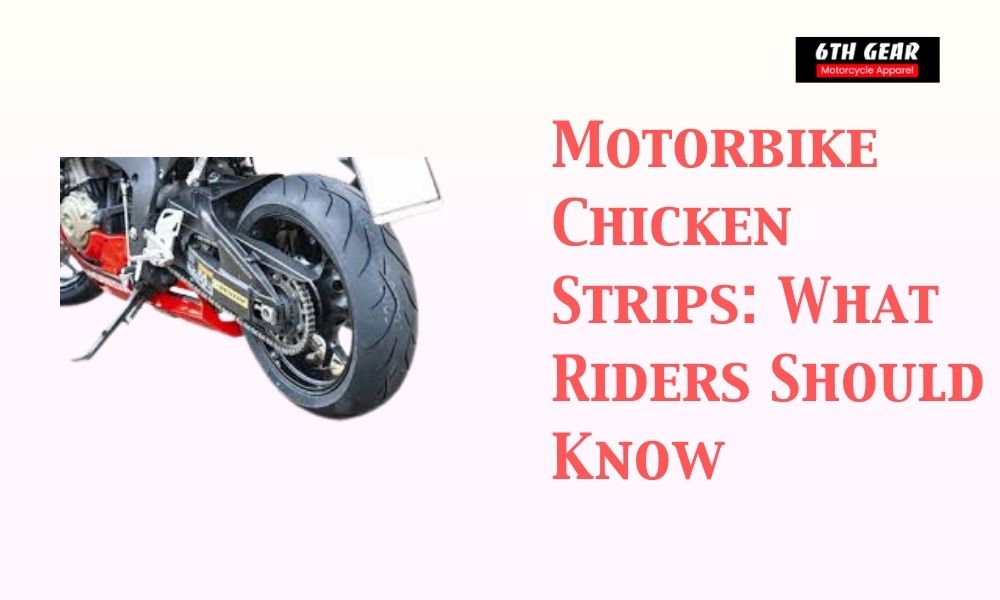Motorbike Chicken Strips: What Riders Should Know

Among motorcycle enthusiasts, few terms spark as much curiosity as motorbike chicken strips. For some, these strips are a badge of honor. For others, they are simply misunderstood markings on a tire. The truth is that chicken strips tell a story about riding style, skill, and confidence, but not always in the way people assume.
In 2026, conversations around chicken strips continue to evolve. While some riders view them as proof of inexperience, experts stress that they are not always a sign of poor skill. Instead, they reveal how a bike is used and what conditions it faces on the road.
What Are Motorbike Chicken Strips?
To put it simply, motorbike chicken strips are the untouched edges of a motorcycle’s tire tread. When a tire is used aggressively in cornering, the wear extends closer to the edge. If the outer bands remain unused, they appear as strips—hence the name.
In casual conversation, chicken strips motorcycle tires often get linked with lack of courage or limited lean angles. Yet reality is more complex. Road conditions, tire design, and even the type of riding can all influence whether motorcycle tyre chicken strips appear.
A fresh set of motorcycle jackets can provide the confidence needed to explore corners more comfortably, without compromising safety.
Why Do They Appear?
The presence of chicken strips on a motorcycle depends on several factors. Riders who focus mainly on commuting often have wider strips, as they rarely lean the bike aggressively. Touring riders may also show strips, as comfort and stability take priority over extreme cornering.
On the other hand, track riders or experienced sportbike owners usually wear their tires closer to the edge. This is where chicken strips bike become smaller or disappear entirely. Still, having large or small strips does not automatically define skill.
Myths Around Chicken Strips
A common myth is that wide chicken strips motorcycle always signal an inexperienced rider. In truth, strips often mean the bike has not been pushed to maximum lean, which might be a smart choice on public roads.
Another myth is that eliminating strips equals mastery. Track riders know that each tire behaves differently, and some models naturally leave narrow strips no matter how far the bike leans.
Do All Bikes Show Chicken Strips?
Not every motorcycle displays strips in the same way. Sportbikes tend to reveal them clearly because of their rounded tire profiles. Cruisers and touring motorcycles, however, may not show them at all due to flatter tire shapes.
Even tire brands make a difference. Some designs wear evenly across the tread, while others emphasize a center strip. This is why moto chicken strips should never be used as the sole measure of riding ability.
For riders focusing on protection, motorcycle safety pants remain a smarter investment than worrying about tire edges.
Safety First: Lessons from the Track
Professional racers lean their bikes at extreme angles, leaving almost no strips. But they also ride in controlled environments with racing suits, specialized tires, and medical teams nearby. On open roads, trying to imitate that style is risky.
The wiser lesson is to learn from their focus on safety. Strong braking, smooth cornering, and confidence in gear all matter more. Durable moto riding boots add protection and grip, helping riders handle corners without distraction.
Why Chicken Strips Don’t Always Matter
For everyday riding, wide motorcycle tires chicken strips are not a weakness. They can signal safe riding habits, weather-conscious decisions, or simply practical use of the bike. Chasing the disappearance of strips often leads to unnecessary risks.
Instead, the focus should be on comfort, enjoyment, and safety. Upgrading to a motorcycle jacket summer is a far better choice for warm-weather rides than worrying about strip size.
Competitor Analysis: Adding Real Value
Most competitor articles stop at defining what are chicken strips on a motorcycle or mocking riders who have them. The conversation is shallow and often judgmental.
This blog adds value by:
- Explaining real reasons behind strips.
- Debunking myths linked to inexperience.
- Showing how gear choices improve confidence and safety.
- Connecting racing knowledge with everyday riding.
That balance of insight and practicality is what sets this content apart.
FAQs About Motorbike Chicken Strips
- Do chicken strips mean poor riding skills?
Not always. They can reflect road use, tire type, or riding style. - Can chicken strips be removed completely?
Track riders often eliminate them, but it is not necessary for safe or skilled riding. - Why are they called chicken strips?
The term comes from the idea that a rider is “chicken” for not leaning to the tire’s edge. - Are chicken strips dangerous?
No. They are simply unused portions of the tire tread and do not affect performance. - Do all motorcycles show them?
No. Tire profile and motorcycle type influence whether strips appear clearly.
Final Thoughts
The truth about motorbike chicken strips is simple: they are not the measure of a rider’s courage or ability. Strips appear for many reasons—bike type, tire design, road conditions, or simply riding preference. What matters most is safe and confident riding, not the image of tire edges.
For anyone gearing up for the road, invest in jackets, boots, and rain gear built to keep every ride safe and comfortable. Racing shows off sharp lean angles and daring speeds, but everyday riding depends on balance, comfort, and solid protection. Explore the Six Gear collection to find the right gear for the next ride.
















